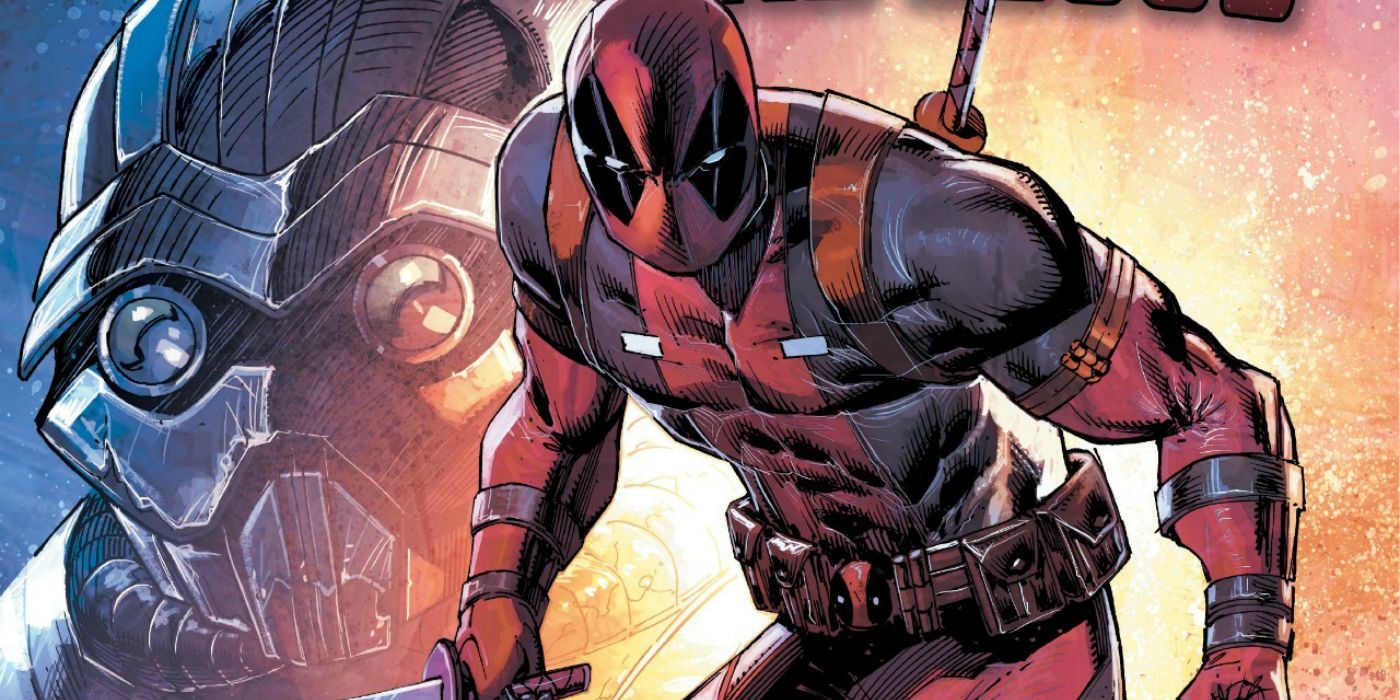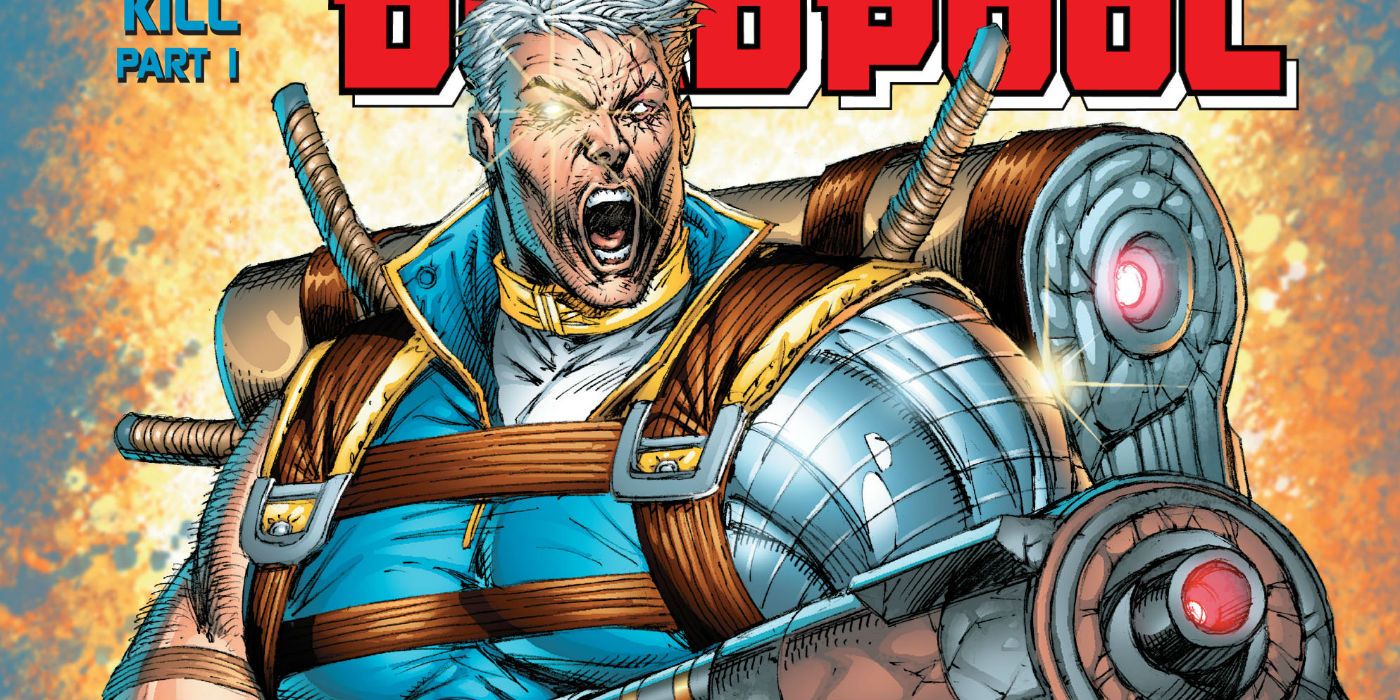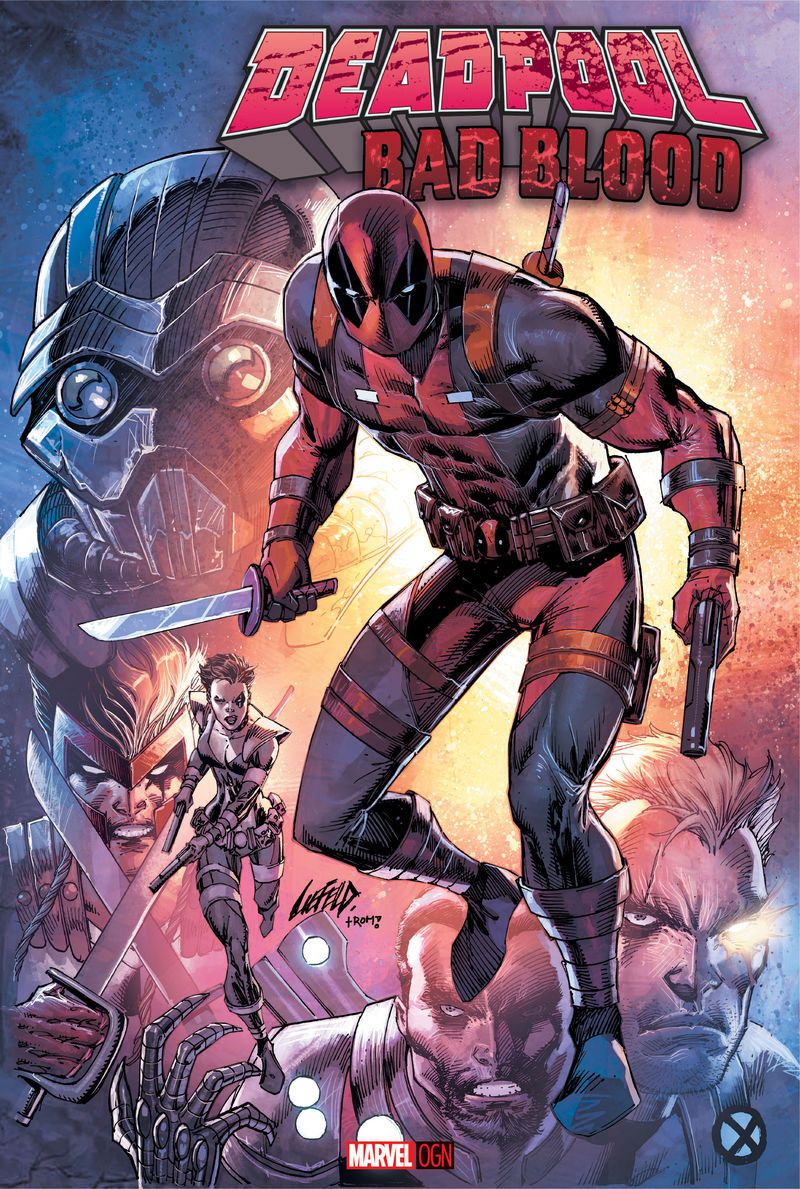The very enthusiastic Rob Liefeld took the stage at WonderCon, both to promote his upcoming original graphic novel "Deadpool: Bad Blood," and to discuss (at length) the origins of the character.
It's important to note up front that this article can't do justice to how animated Rob Liefeld is on stage. He had the Wondercon staff provide a fifty foot long microphone cord because he planned to come down into the crowd and answer questions Phil Donahue-style. He said he wouldn't sit, he would stand and was hyped up on "Propel water and Kit Kats. I'm sniffling a lot; I don't do cocaine like Donald Trump."
"I'm on time! It's 4 o'clock! I beat expectations!" Liefeld exclaimed cheerfully as he took the stage.
Liefeld decided to explain the origins of Deadpool as a character up front, citing five primary sources: the success of Cable, the 1988 movie "Twins," jealousy over Todd McFarlane's taunting about Spider-Man, "Star Wars" and the idea that characters with weapons are better. How so?
In "Twins," genetic engineers took all the "perfect" material to make the Arnold Schwartzenegger character and left all the "crap" with Danny DeVito. Liefeld posited that the Weapon X program did the same, putting their best work into Wolverine and using the remnants and cast off material on Deadpool.
Liefeld cited a huge fascination with "Star Wars" and the extraordinary lengths he went through to get a mail-order Boba Fett action figure. His love for Boba Fett was why Deadpool had to be a mercenary, and the triad of Tolliver, Deadpool and Cable was meant to mimic Jabba the Hutt (crime lord), Fett (gun for hire) and Han Solo (mysterious man with a mark on his head).
As a child, Liefeld said he preferred the Avengers over the X-Men, due mainly to the fact that the Avengers had a host of weapons -- the Swordsman, for a while, with his blade, Thor with his hammer, Hawkeye with his bow and arrows, Cap with his shield and Black Widow's wrist line she would use to ensnare people. In contrast, with the exception of Wolverine, the mutant team were "arm casters and temple touchers," a description Liefeld demonstrated, mimicking how Jean Gray, Iceman, Angel essentially stuck their arm out, or held their arm out to utilize their powers. Alternatively, Cyclops and Professor X held a hand to their temple to use their powers. "This was not exciting to a boy," Liefeld said. "This is not exciting at a 7-Eleven spinner rack! Wolverine had three knives on each hand, and he would gut you with them! That's exciting to a boy! Until 'Logan,' the mutant power was the ability to clean the claws as they came out," he quipped, making fun of the need for comics to minimize the blood and gore. Thus, Deadpool had to have weapons.
"If you don't have Cable, you don't get Deadpool. because that was my first at-bat," he said. Liefeld was offered "X-Factor" when it was a huge seller and he passed, preferring to take the "fixer-upper" title "New Mutants." Liefeld considered his biggest victory, which took a year and a half, to be changing the name to "X-Force." To make this all work, he realized that the kids of "New Mutants" needed a leader, so he introduced the Wolverine-influenced character Cable, a man of mystery with unrealistic guns. "I hate reference! I gave him big, vacuum cleaner, made-up guns that looked cool!" Liefeld explained. "Shoot me if I have to draw those guns. Note to self: never draw Punisher.
"Cable goes over and they give Little Robbie Liefeld his wish: 'We're gonna let you write this comic.' Whaaaaaat? Mission accomplished! Now I get the whole thing, and they're gonna call it 'X-Force!'" he continued. "Cable was super successful. When I got on, it was selling 114,000 copies, that's what my royalty statement said. 'New Mutants' #94, we were at 500,000 copies. How do I not fall flat on my face? If you see the cover to 'New Mutants' #98 there are three options for success. There is Deadpool, there is Domino and there is a guy with green hair. His name you don't know because he didn't take. I threw it all against the wall. Domino! Deadpool! Gideon! Gideon went the way of the dinosaur. 'New Mutants' #98 sells 750,000 copies. I know this because I was a starving cartoonist. I didn't get in this for money. When you're a starving cartoonist that lives in an apartment and you're trying to help your parents out, who are in financial straits, your sales and going up the right way matters. People go, 'Rob, what did you think when that sold real well?' When somebody likes you and your book goes from 114,000 copies to 750,000 copies, then with 'X-Force' [#1], five million copies, I said, 'I think they're gonna let me draw the comic next month!' It's job security! Whoo! I get to keep drawing!"
Finally, Liefeld grew tired of his friends Todd McFarlane and Erik Larsen making fun of him for working so hard on a team book; "Spider-Man" could have a single panel splash page with Spidey's head, so Liefeld was inspired to create a character with a cool looking mask that covered his entire face. Deadpool helped Liefeld hit deadlines, and he's very open about what he stole from Spider-Man to invent the character. "That's why they're very similar," he said, down to the wisecracks. During that period, Peter Parker was dour and less funny due to the influence of Frank Miller and "The Dark Knight," so Deadpool was devised to fill that role.
According to Liefeld, Marvel never received as much mail as they did from the creation of Deadpool, so much the publisher sent it to the writer/artist in a box the size of a washing machine. Liefeld stopped to explain paper mail and how fan letters worked to the children in the room, an aside that got big laughs from the audience. Liefeld's editor at the time was Bob Harras, who sent the mail to reinforce a request to put Deadpool in the book that was due, "New Mutants" #100 -- but Liefeld had shipped the finished pages out already. That's why there's a Deadpool fact file in "X-Force" #1 (still the second best selling comic of all time), and on the cover of "X-Force" #2.
He turned finally to the new original graphic novel "Deadpool: Bad Blood," due out on May 17. "The first ten pages of 'Deadpool: Bad Blood' were drawn in church in 2009," Liefeld explained, scrolling into a story about growing up the son of a supportive Baptist preacher and a critical mother, drawing on church bulletins to stave off boredom in lengthy services. He had no publishing plan, and was surprised when Marvel approached him to do the prestige format project. "I said, 'Where does this fit in continuity?'" Marvel told him, "We don't pay attention to continuity when it comes to Deadpool."
Liefeld spent most of the brief question and answer period singing the praises of Ryan Reynolds. ("Ryan Reynolds is Deadpool. I just hope he's okay today.") He spoke of how he tried to convince a friend of his who worked at Fox to slip in a post-credits scene in "X-Men Origins: Wolverine" with Reynolds in the mask, but they couldn't get it done, so he suggested fans only watch the first ten minutes of the film.
Fans mostly asked about the movies, questions Liefeld answered happily, but without revealing any new information; apparently he got in trouble for tweeting at Russell Crowe about reading for the role of Cable. He did admit he still goes in to buy every issue at his local retailer.



